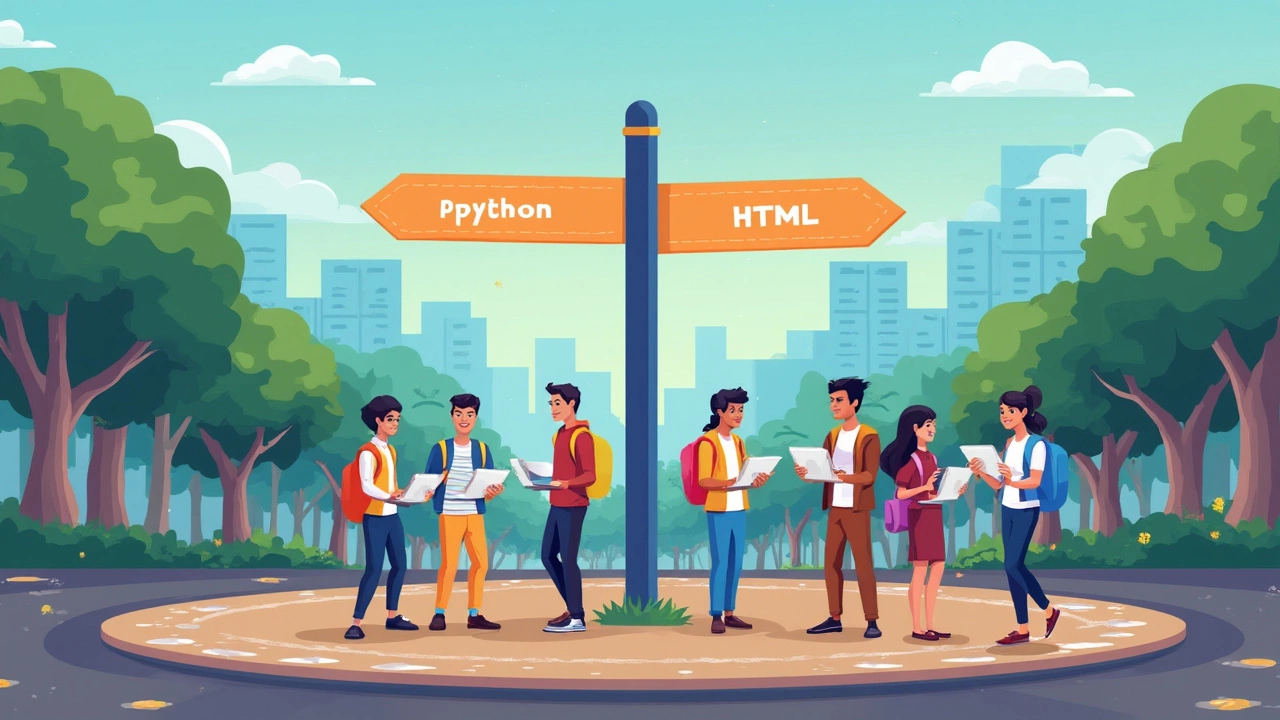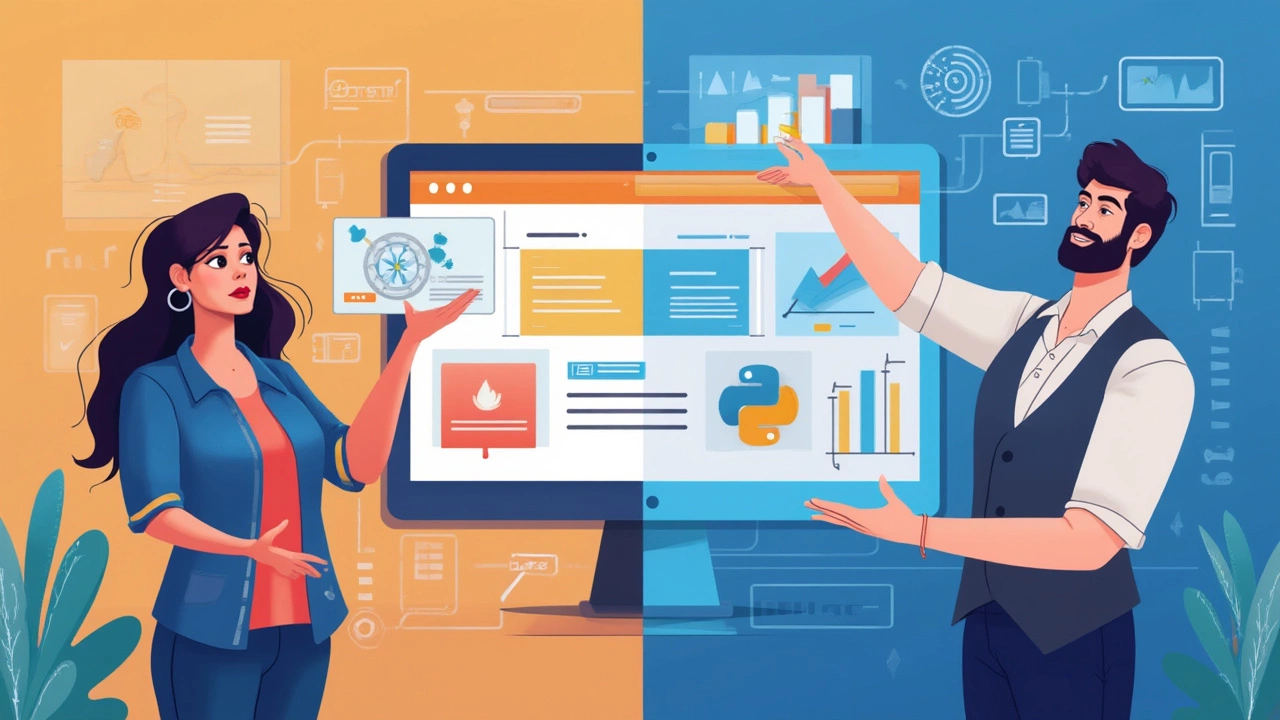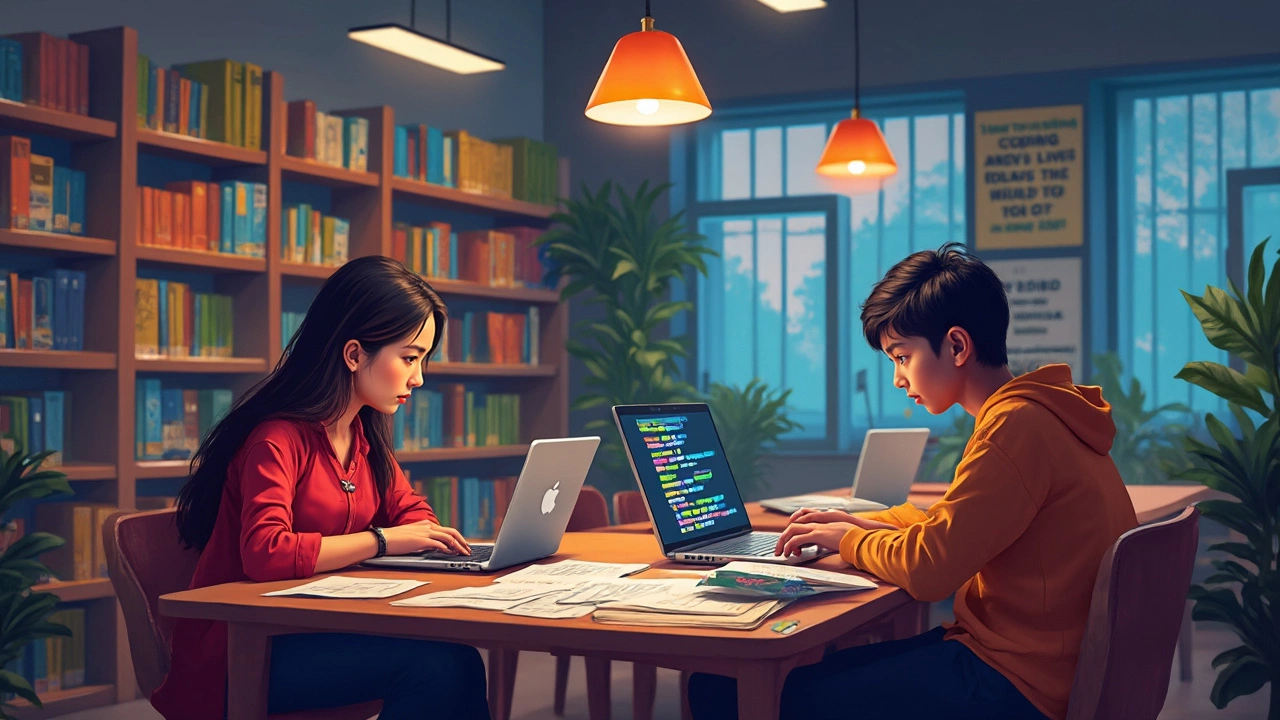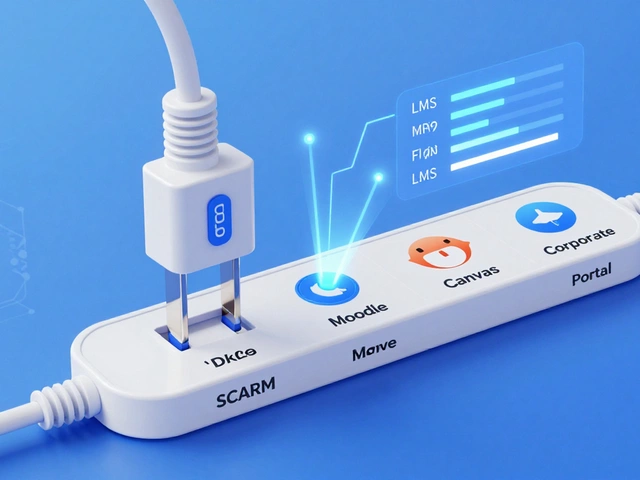Ever feel like everyone says “just learn to code,” but they never tell you where to begin? Here’s the thing—if you’re stuck between Python and HTML, you’re already asking the right questions. Both are super popular, but they’re not meant for the same things, and choosing the right one could save you weeks or even months of stress.
First, know this: Python and HTML are not competing—they’re just different tools. Python is a real programming language. It powers everything from Instagram to those mind-blowing AI apps you keep hearing about. HTML, on the other hand, is the backbone of every website—without it, the internet literally wouldn’t work. But it’s not really “programming”—think of it as building the skeleton of a webpage.
If you’ve never written a single line of code, the choice will shape your whole experience. Do you want to create websites or build apps that crunch numbers and make decisions? Most people get this part wrong and end up frustrated. Let’s clear the confusion right from the start so you can get hands-on with the right skills and actually have fun learning.
- What Each Language Does (and Why It Matters)
- How Hard Is It to Learn Python vs. HTML?
- Your Goals: Building Sites or Crunching Data?
- What Employers and Projects Want
- Smart Tips for Starting the Right Way
What Each Language Does (and Why It Matters)
If you're new to coding, it's super easy to get HTML and Python mixed up. But they're meant for different things. Here's how they work in the real world.
HTML stands for HyperText Markup Language. It's not a "programming" language in the sense that it doesn't run any logic or do calculations. Instead, HTML is all about how things look and are organized on a webpage. Whenever you visit a website, everything you see (like headings, paragraphs, lists, and images) is there because of HTML. It tells your browser, "Put this here, make that bold, show an image." Nothing too scary, but also, not something you'd use to build a calculator or a game.
Now, Python is a full-fledged programming language. It can build anything from simple calculators to entire social media platforms. Instagram, Dropbox, and even parts of Google work because of Python. It's known for simple, readable code—so you don't have to memorize weird symbols or complicated rules. Python is what you use when you want computers to solve problems, analyze data, or automate boring stuff. If you like seeing results fast, Python scripts can be run in seconds, and you can do everything from crunching spreadsheets to building chatbots.
Check out how they stack up side by side:
| Feature | HTML | Python |
|---|---|---|
| Used for | Web page layout & design | Programming, automation, apps, data analysis |
| "Real" programming? | Nope (markup language) | Yep (general-purpose code) |
| Beginner friendly? | Very basic to start | Friendly, more powerful |
| What big names use it? | Every website out there | Instagram, YouTube, Spotify |
So, if you want to show stuff on the web, start with HTML. If you want something to think or do work for you, Python is your go-to. Loads of people end up learning both, but your first step totally depends on what grabs your interest the most.
How Hard Is It to Learn Python vs. HTML?
Let’s get real—HTML is the easiest way into coding, hands down. It’s basically a set of tags that tell your browser how to show things like headers, images, and links. If you can use a text editor like Notepad or even Google Docs, you can write HTML. In fact, you can probably create a simple webpage in less than an hour, just by looking at a few examples online.
HTML doesn’t have logic or math—there’s no “if this, then that” thinking. You write what you want to see, save the file, and open it in your browser. There might be a learning curve with some of the tags and best practices, but mistakes rarely break anything in a scary way. That’s why people often start with HTML in beginner coding classes.
Python is a notch up. There’s code logic, variables, and more rules to follow. You’ll write actual instructions for the computer to follow, which means you can automate stuff, analyze data, or even build games. But with that power comes a bit more to learn. You have to install Python, understand indentation (yep, even spaces matter), and debug those annoying red error messages.
The good news? Python is famous for being beginner-friendly. Its syntax reads like plain English, so people pick it up faster than languages like Java or C++. Loads of free resources and tutorials exist, even for total newbies. But expect to spend a bit of time getting used to new ideas like loops and functions.
- If reading and marking up content for the web sounds good, HTML feels like “instant results.”
- If you want to play with data, make calculators, or explore real programming, Python is worth the extra effort.
Bottom line—HTML is super quick to grasp. Python takes more brainpower at first, but it’s way more flexible for the long haul.

Your Goals: Building Sites or Crunching Data?
Before picking your first language, get clear on what you really want to do. Are you seeing yourself making websites or are you into stuff like data analysis, apps, or even getting into AI? The answer tells you a lot about your best starting language.
If you care about making websites or tweaking how stuff looks online, start with HTML. HTML is the first thing every webpage uses, and you can see your changes show up instantly. It’s satisfying and hands-on. But if you’re dreaming of doing more behind the scenes—like automating boring tasks, working with numbers, or making stuff ‘think’—then go with Python. Python shows up almost everywhere computers do these days, even NASA uses it for some of their missions!
If you’re not sure, check out this quick comparison. These numbers come from Stack Overflow’s 2024 survey, where real developers shared what they use the most:
| Field/Goal | % Using HTML | % Using Python |
|---|---|---|
| Web Development (Front-end) | 95% | 21% |
| Data Science / Machine Learning | 8% | 78% |
| General Scripting / Automation | 3% | 67% |
| App Development | 6% | 54% |
So what does this mean for your day-to-day? Here’s the deal:
- Python is the smart pick if you want to explore code that does things, plays with numbers, or performs complicated tasks. It’s also big in jobs related to AI, data, and automation.
- HTML is your go-to if you want to build or style websites. It’s the building block, and you’ll really see your progress fast.
The choice isn’t permanent, either. You can always switch or learn both once you get the basics down. But starting with the one that matches your goals boosts your motivation and makes you stick with it.
What Employers and Projects Want
Let’s get real for a second—if you’re here because you want a job, you need to understand what’s hot in the job market and what employers actually care about. Spoiler: Python skills are everywhere on job boards in tech, while HTML is a basic expectation if you’re touching anything web-related.
Most tech job listings for entry-level roles put Python near the top of their required skills, from data science to automation and backend web development. For web design or front-end gigs, HTML is step one, but it’s rarely the only thing employers want. They usually pair HTML with CSS and JavaScript, and sometimes even ask for a bit of Python too if the role deals with dynamic content or automation.
Here’s what’s trending according to job stats as of 2025:
| Role | Main Skill Needed | Python Required? | HTML Required? |
|---|---|---|---|
| Data Analyst | Python | Yes | No |
| Web Developer (Front-End) | HTML, CSS, JavaScript | Sometimes | Yes |
| Software Engineer | Python, Java | Yes | Rarely |
| Content Manager | HTML | No | Yes |
If you want to work on projects that involve building data tools, creating scripts to do boring work for you, or getting into artificial intelligence, Python is your door-opener. If you picture yourself designing web pages, making blogs, or working in online marketing, HTML is your main ticket—but keep in mind it’s just the start. Most companies expect you to style pages (with CSS) or add interactivity (with JavaScript) too.
- Python is usually asked for in roles involving automation, data, or application logic.
- HTML is non-negotiable for anything web, but it’s only the foundation—job listings almost never ask for JUST HTML.
- Combining the two puts you way ahead if you want to work on web apps, since Python powers the backend and HTML handles the user side.
So, what’s the move? Decide based on where you see yourself, not just what you think looks cool. Employers want people who can show how they use these languages to actually solve problems, not just list them on a resume.

Smart Tips for Starting the Right Way
Ready to actually dive in and start? You don’t need to overthink this step, but a few smart moves can save you tons of effort and keep you motivated. Here’s how to kick off your coding journey without getting stuck or confused.
- Pick one language and stick with it for a few weeks. Jumping between Python and HTML at the start will just mess with your head. Focus on Python if you want real programming or data projects. Go with HTML if building and designing web pages is what you’re after.
- Use free resources and hands-on tutorials. Sites like Codecademy, freeCodeCamp, and W3Schools are all legit and break things into baby steps. Don’t just read—type the code out yourself, even if it’s basic "Hello World." Your memory works better that way.
- Set a tiny, specific goal for your first week. Instead of saying “learn HTML,” aim to “make one simple webpage.” For Python, try “write a calculator for adding numbers.” Achieving even a small project keeps things fun and proves you can actually do it.
- Take notes in your own words. Even just scribbling what you learned or questions that pop up makes a difference. Bonus: this gives you something to revisit when you forget how something works (and you will forget, we all do).
- Build habits, not streaks. You’ll burn out trying to cram for hours on Day 1. It’s better to do 20–30 minutes a day than to finish a whole freeCodeCamp track in one go. Consistency matters more than speed.
Most people who drop out early think coding is about memorizing everything. Nope. It’s about problem-solving and finding answers when you’re stuck. Google and Stack Overflow are every beginner’s lifesavers.
Finally, don’t compare yourself to others online. Some coder's fancy dashboard might look wild, but they started from “print(‘Hello World’)” too. Celebrate your tiny wins, and keep the focus on Python or HTML—whichever you picked—until you feel confident to branch out. Progress comes from doing, not just planning.





